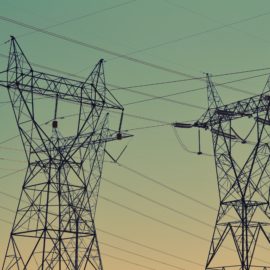

This article is an excerpt from the Shortform summary of "The Smartest Guys in the Room" by Bethany McLean and Peter Elkind. Shortform has the world's best summaries of books you should be reading.
Like this article? Sign up for a free trial here .
What is a special purpose entity at Enron, and how did the company use them as a part of their business schemes?
An SPE, or special purpose entity, at Enron was a core part of the company’s business dealings. However, Enron abused the special purpose entity structure. Here’s how the use of the special purpose entity Enron structure helped lead to the company’s downfall.
The Special Purpose Entity Enron Fraud
An SPE or Special Purpose Entity is meant to be independent legal entities that fulfill a narrow objective, like purchasing assets/securitized assets from other companies. They are structured to be separate legal entities from the main firm, to protect the firm from financial risk.
The special purpose entity Enron structure was abused to inflate earnings and hide losses. In summary, Enron used these SPEs to raise debt to purchase assets, without the debt or assets showing up on their financial statements. Enron would then sell assets to these funds and book it inappropriately as cash flow. Later, Enron would also use SPEs to hide troubled assets that were falling in value, which meant losses would be kept off Enron’s financial statements
As long as 3% of the capital in the SPE came from an independent source and was at risk (not guaranteed), then the SPE qualified as independent. Thus Enron could fund 97% of the capital from raising debt, but not report this as debt on their balance sheets. The use of special purpose entities at Enron were used to create false and inflated profits.
- In reality, the 3% of capital often came partially from friends of Enron employees, so they weren’t truly independent.
In reality, Enron gave guarantees to lenders, including guaranteeing a debt-like return while Enron kept the real return.
- Further, the debt was rarely supported by the true value of the asset, since it was based on unreasonably optimistic assumptions about the success of the asset.
Further, sales of the assets could be booked as operating income. So it looked like Enron had sold something and booked cash flow. But there was a big wad of additional debt that had to be paid back.
- Further, this operating income only appeared once – Enron couldn’t claim that cash flow in future years. So Enron promised public markets growth of real underlying earnings, but was actually filling it desperately with one-time sale deals.
This Was All Done in the Open
Contrary to popular belief, many of these deals were not secret, but rather publicly revealed and boasted about.
Third parties internal (Arthur Andersen) and external (analysts) applauded the deals for their financial ingenuity. Banks participating in the deals earned large fees.
Fastow, who saw himself as a savior of the company, inappropriately participated in these deals himself, providing the 3% independent capital for the SPE (special purpose entity). In Fastow’s view, these were “just commissions,” and Enron owed him for saving the day.
Enron’s Chief Accounting Officer Rick Causey was meant to keep Fastow in check, but he saw his job as facilitating Fastow’s transactions.
By the end, Enron owed $38 billion, of which only $13 billion was on its balance sheet.
Cracks Start to Appear in the Special Purpose Entity Enron Scheme
Despite Enron’s best efforts to conceal their losses, by late 2000, skepticism started mounting. The dotcom bubble had fallen from its peak, and company fundamentals were being questioned.
On December 2000, Jeff Skilling was announced to succeed Ken Lay as CEO, taking place in February. This was already planned well in advance – his contract had a trigger – if he weren’t named CEO by end of 2000, he could leave and be paid over $20MM.
SPEs, Again
Enron embarked on new schemes to lock in gains while avoiding booking losses.
In 2000, special purpose entities called Raptors would buy underperforming Enron assets. If the assets continued to decline in value, the Raptors would pay Enron, thus giving Enron a gain that would offset the loss.
In reality, these transactions were grounded on Enron stock. This led to positive feedback loops:
- An increasing Enron stock price would allow further ability to keep losses from public view, which would in turn increase stock price.
- However, if Enron shares fell, the Raptors would be less able to pay back Enron, which would cause further share cratering.
By late 2000, the assets in SPEs declined in value, and Enron needed its stock to continue climbing to cover losses. Because the stock price stalled, Enron would have to declare losses, which defeated the purpose of the vehicles. An emergency solution cross-collateralized the four Raptors, allowing healthy vehicles to support sick ones.
The special purpose entity Enron structure were a huge part of the company’s structure and business dealings. But the us of the special purpose entity at Enron eventually led to the company’s downfall.

———End of Preview———
Like what you just read? Read the rest of the world's best summary of Bethany McLean and Peter Elkind's "The Smartest Guys in the Room" at Shortform .
Here's what you'll find in our full The Smartest Guys in the Room summary :
- How Enron rose to become one of the world's most promising companies
- How Enron management's greed led it to start cutting corners
- The critical failures that crashed Enron's house of cards to the ground






